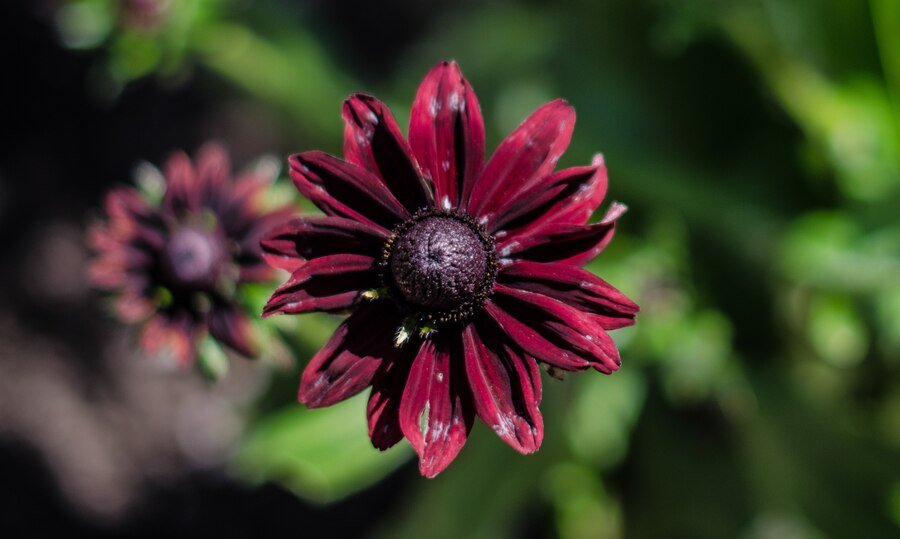The Black-Eyed Susan is a cheerful flower that brightens gardens and landscapes across the United States. Known for its striking yellow petals and dark centers, this perennial plant is not just beautiful but also has many interesting features. In this guide, we will explore the characteristics, growing tips, and benefits of the Black-Eyed Susan.
What Is a Black-Eyed Susan?
Description and Appearance
The Black-Eyed Susan (Rudbeckia hirta) is a flowering plant that belongs to the daisy family. It typically features vibrant yellow petals surrounding a dark brown or black center, which is where it gets its name. The flowers usually bloom from summer to fall, creating a stunning display in gardens.
Varieties of Black-Eyed Susans
There are several varieties of Black-Eyed Susans, including:
- Rudbeckia hirta: The most common type, known for its bright yellow flowers and adaptability.
- Rudbeckia fulgida: This variety has more orange-yellow petals and is often used in borders.
- Rudbeckia triloba: With smaller flowers and a bushier appearance, this type adds variety to gardens.
Where to Grow Black-Eyed Susans
Ideal Growing Conditions
Black-Eyed Susans thrive in full sun, needing at least 6 hours of direct sunlight each day. They prefer well-drained soil and can tolerate various soil types, making them versatile for different gardens.
Zones for Planting
These flowers are hardy in USDA zones 3 to 9, which means they can grow in most parts of the United States. They are particularly popular in the Midwest and the Northeast.
How to Plant Black-Eyed Susans
Starting from Seeds
You can start Black-Eyed Susans from seeds either indoors or directly in the garden. If starting indoors, plant seeds about 6 to 8 weeks before the last frost date. For outdoor planting, sow seeds in spring after the threat of frost has passed.
Transplanting Seedlings
If you started seeds indoors, transplant the seedlings outdoors when they are about 2 to 3 inches tall. Ensure to space them about 12 to 18 inches apart to allow for growth.
Caring for Black-Eyed Susans
Watering Needs
While Black-Eyed Susans are drought-tolerant once established, they need regular watering during their first growing season. Water them deeply once a week, allowing the soil to dry out between waterings.
Fertilizing
Fertilizing is generally not necessary for Black-Eyed Susans, but you can apply a balanced fertilizer in early spring to encourage growth. Avoid over-fertilizing, as this can lead to fewer blooms.
Pruning and Deadheading
To promote more flowers, regularly deadhead spent blooms. This encourages the plant to produce new flowers throughout the season. In late fall, you can cut back the plant to about 6 inches to prepare for winter.
Benefits of Black-Eyed Susans
Attracting Pollinators
One of the great benefits of growing Black-Eyed Susans is that they attract a variety of pollinators, including bees, butterflies, and hummingbirds. This helps support local ecosystems and encourages biodiversity in your garden.
Medicinal Uses
Historically, Black-Eyed Susans have been used in traditional medicine. Native Americans utilized various parts of the plant for medicinal purposes, including treating infections and inflammation. However, always consult a healthcare professional before using plants for medicinal purposes.
Landscape Aesthetics
These flowers add a splash of color and charm to any garden. They work well in borders, wildflower gardens, and as part of mixed plantings. Their tall, upright growth makes them excellent for adding height to garden beds.
Common Issues and Solutions
Pests and Diseases
While Black-Eyed Susans are generally hardy, they can sometimes be affected by pests like aphids or beetles. Regularly check your plants and treat any infestations with insecticidal soap if necessary.
Fungal Issues
Overly wet conditions can lead to fungal diseases such as powdery mildew. Ensure proper spacing between plants and avoid overhead watering to help reduce humidity around the foliage.
Conclusion
The Black-Eyed Susan is more than just a pretty flower; it’s a resilient plant that brings joy to gardens and supports local wildlife. With its easy care requirements and vibrant blooms, it’s an excellent choice for both beginner and experienced gardeners. By understanding how to grow and care for Black-Eyed Susans, you can enjoy their beauty and benefits for years to come.
